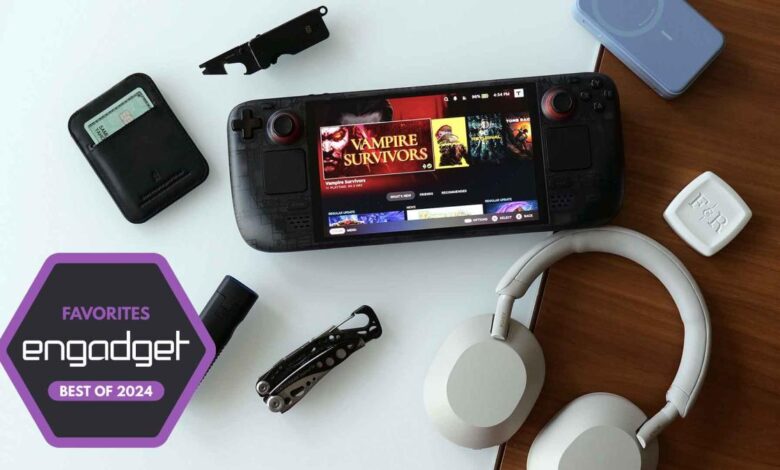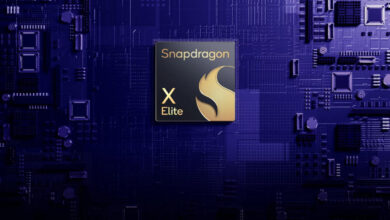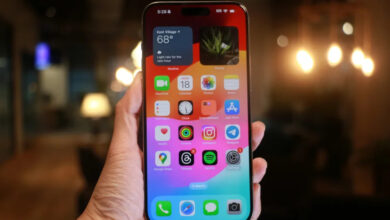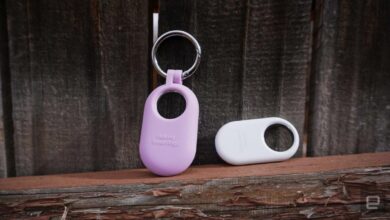
This guide was originally a simple list of products I’ve bought over the years that were good enough to warrant recommending to others. But over time, I wanted to expand things to include tools and gadgets that help solve life’s little challenges. After all, there’s nothing like the feeling of suddenly finding yourself in a jam only to realize the solution is already in your pocket or bag. Or at the very least, if they’re not solving problems, these gadgets will help you pass time more enjoyably. So if you’re looking for a gift for Father’s day, graduation or any other occasion where the recipient will appreciate a finely crafted tool, here’s a list of some of my favorite everyday carry products available today.
For a long time I was looking for a way to trim down my keychain while also adding utility, and with the Quiet Carry Q3, I think I found the answer. It’s capable of holding four keys (or up to eight with the included extension posts) in its extremely durable titanium housing, alongside your choice of either a small knife or multi-tool. For me, the utility blade is the perfect thing for quickly screwing down a tripod mount or opening a bottle, while the removable pocket clip makes it a cinch to snap the Q3 onto your pants or belt loop. All told, it’s a clean and compact way of storing your keys, and it helps prevent them from rattling around too, which is an extra bonus.
For years, I was on the fence about whether I really needed to carry a flashlight around every day. But after one too many instances of fumbling around in the dark, I started looking for options and I landed on the Olight Arkflex. Despite a super sleek body that measures just 0.67 inches thick and 4.25 inches long, this tiny device has a max output of up to 1,000 lumens, which is way better than the 15-year-old Maglite that I normally keep around for emergencies. If you just need a little illumination while you’re out on a walk, it can push a constant 100 lumens for nearly seven hours on a single charge. But the coolest thing about the Arkflex is that it’s the world’s first flashlight with a 90-degree articulating head. This means you can flip it down, tie it onto a backpack strap and it will still shine light ahead. Or by using its reversible clip, you can attach it to the brim of a hat and use it like a floodlight.
The only downside is that the Arkflex uses a proprietary magnetic charging puck. But don’t worry, because for anyone who prefers something with a USB-C port, it’s worth checking out either the Streamlight Wedge/Wedge XT or the Nitecore EDC25, which have similar specs and dimensions (albeit without the handy flip-down head) but with universal power input.
There are an endless variety of multitools out there, but to me the Leatherman Skeletool offers the perfect balance of size, weight and functionality. In the 10 years I’ve had mine, it’s never let me down once. It’s available in a wide range of colors, while Leatherman’s strategic cutouts help keep the weight of its stainless steel frame to a minimum (just five ounces). And thanks to its needle nose pliers, combo knife, large bit driver and more, it’s got all the most important bases covered. So while it might not have as many bits and bobbles as larger rivals, its lightweight and compact size means it’s the one I grab first before I run out the door.
As we’re still in the midst of the transition from USB-A to USB-C, this simple gadget is not only the cheapest gift on this list, it’s also the one I use the most. SanDisk’s drive is available in capacities of up to 512GB and supports USB 3.1 for decent read speeds of up to 150 MB/s. But the best thing is that by simply rotating which end is sticking out, you can transfer data to basically any device with a USB port. Trying to transfer photos to an old desktop that only has USB-A? No problem. How about a tablet that only has a single USB-C connector? Easy. It can even help you offload media from a phone with OTG support so you can install that big software update (stop procrastinating, please). And with its tiny dimensions, you probably won’t even notice it dangling on your keychain, so you can always have it on you.
For people who prefer a lighter, more minimalist way of carrying their cards and cash, the $50 Wally Sleeve is a super compact and affordable option. It’s made from full-grain leather and can hold up to seven cards in its RFID-shielded main sleeve. On the outside, there’s another pocket for cash or transit cards so you can tap them on a sensor without needing to completely remove them from your wallet. But the Wally Sleeve’s best feature is its MagLock closure, which prevents your cards from spilling out. Combine that with a built-in pull tab and you get a slim sleeve that provides easy access to everything you need with zero fumbling.
Alternatively, if you’re looking for a more traditional wallet, the Division Billfold is a slick choice that blends a classic design with new-school materials. Pioneer says the polyethylene yarn that makes up its 10XD fabric (available on the black, blue, forest and onyx colors) is ten times stronger than steel, so it should look great for years. It’s also dirt- and water-resistant, and thanks to a range of pockets and sleeves, it can hold a ton of cards and bills. And for those who want a bit of extra security, the onyx and forest color options also come with RFID shielding.
One thing I truly never leave home without is a portable power bank, because you never know when a day will run long and you might need to recharge some gadgets. While you can certainly opt for a standard external battery with a USB-C port, Anker’s MagGo series has introduced an interesting twist on the category thanks to the addition of Qi 2 that supports magnetic wireless charging at up to 15 watts. And when you combine that with a built-in kickstand, you get something closer to a portable charging dock than a basic battery pack. This allows you to prop your phone up to watch videos while you top off its battery; if you want faster speeds, you can always plug in a cable.
Granted, both the 6.6K and 10K mAh models are a bit bulkier than a traditional portable battery, but I find that the added functionality is worth it. The 10K model even comes with a screen, so you get a more accurate idea of how much charge it has left. The biggest downside is that, because Android phone makers have been slow to adopt Qi 2, for now, you’ll need a late-model iPhone to take advantage of its magnetic wireless charging capabilities.
I don’t know what it is, but I have a thing for bags. And out of all of the ones I own, the Peak Design 35L Travel Duffel probably gets the most use because it can do it all. It’s the perfect thing for a weekend trip, but I’ve always used it for groceries, too. More recently, it’s become a baby bag for carrying everything I need to have on hand for a fussy toddler. Not only is it durable thanks to its weatherproof 600D nylon canvas shell, it has removable handles and tons of eyelets scattered around the duffle so you can rearrange the straps however you want. It can be set up like a backpack if you want. Or if you’re lugging some gear, you can stuff three of Peak Design’s packing cubes in there (or four cubes on the 65L duffel) so all your camera equipment is nice and protected. It’s really a do-everything bag.
While some of the other devices on this list might get left at home on odd days, my Galaxy Buds 2 Pro never leave my side. Despite their small size, Samsung’s buds deliver great sound, active noise cancellation and between six and eight hours of battery life (depending on if you use ANC). They are also some of the most comfortable earbuds I’ve ever worn, to the point that I use them at night to help me fall asleep. And thanks to their IPX7 rating for water resistance, they were able to survive an accidental trip through the wash without issue. That said, if someone isn’t an Android user, Samsung’s buds don’t make a ton of sense. But for iOS users, there’s always the AirPods Pro 2.
When it comes to wireless over-the-ear headphones, Sony’s WH-1000XM5 are in a class of their own. After buying them for my wife six months ago and using them off and on (when she lets me), I’ve been looking for an excuse to buy a pair of my own. They look good, they’re easy to setup, and their sound quality is unmatched, while Sony’s top-notch noise cancellation helps drown out unwanted disturbances. And with a battery that lasts about 30 hours (with ANC on), I typically only have to charge them about once a week. The one little annoyance I’ve found is that you can’t use them while charging, but since they have the ability to add three hours of juice in just 30 minutes, that’s hardly a deal breaker.
Now I must admit, I don’t carry the Steam Deck around literally every day. It’s a touch too big for that. But you better believe that on trips or even long commutes, this thing is in my bag. That’s because out of all gaming handhelds I’ve tested, the Steam Deck offers the best blend of ease of use, performance and battery life. And then last year, Valve basically perfected the original model by updating it with a new OLED screen, a more efficient chip and some other tweaks. Its built-in touchpads also make playing games originally designed for mouse and keyboard much easier. Plus, the Steam Deck is one of the few handhelds that comes with an included carrying case, which is a must for any sort of frequent traveling. But the best part is that starting at $549, it’s less expensive than rivals like the ASUS ROG Ally (at least the one with the top-tier Z1 Extreme chip) and the Lenovo Legion Go, too.
Now I will admit I don’t carry this on my every day, but when it comes time to tinker or repair some electronics, this set is the first thing I grab. The included carrying case holds 25 steel bits that work with all the most common screw heads (Torx, pentalobe, tri-wing, and more) while the magnetic screwdriver chuck makes switching bits in and out a breeze. You also get one-touch controls for automatic screwing and unscrewing, while still having the flexibility to turn things in manually in more delicate situations. Finally, thanks to its built-in USB-C port, you’ll never need to worry about finding an annoying proprietary charging brick.
Source link




